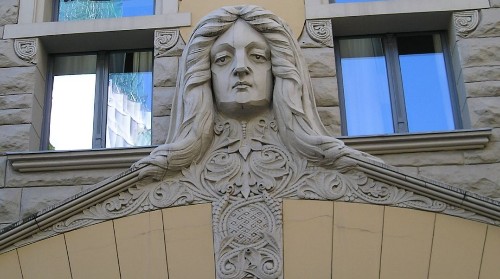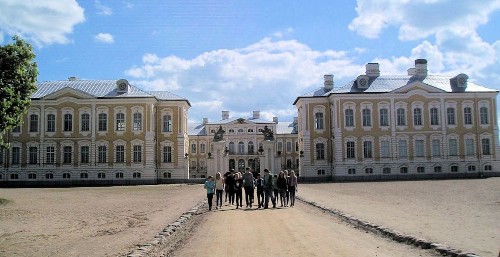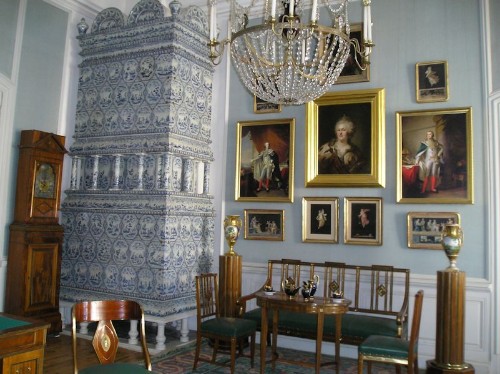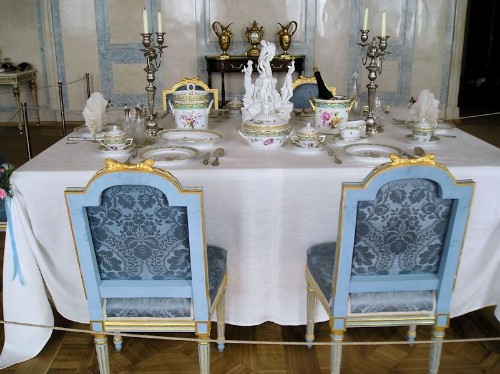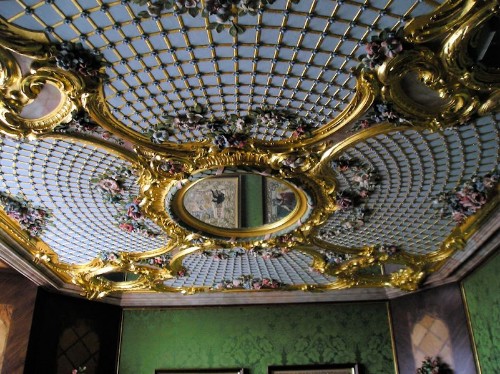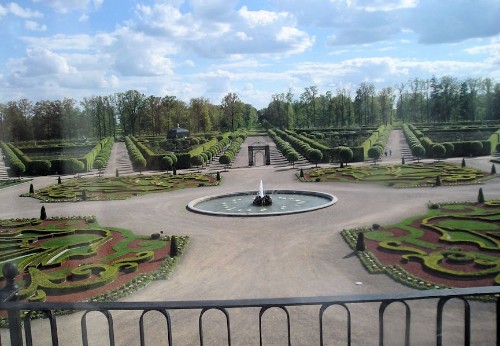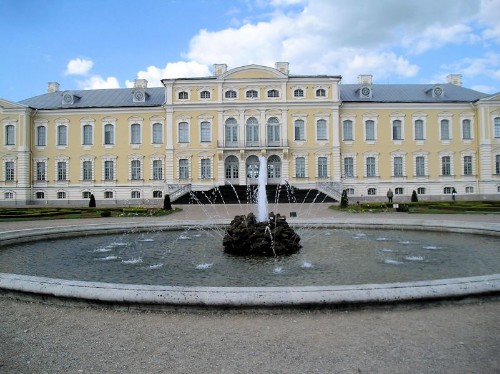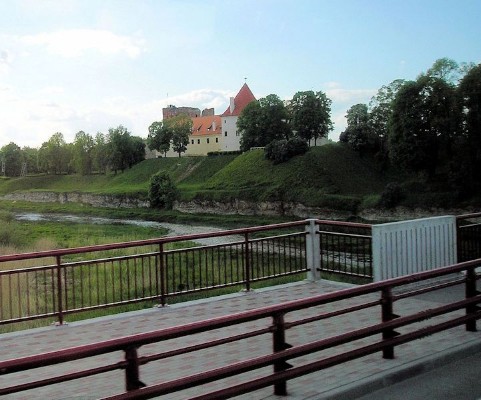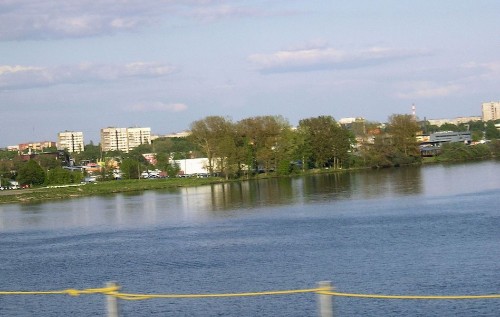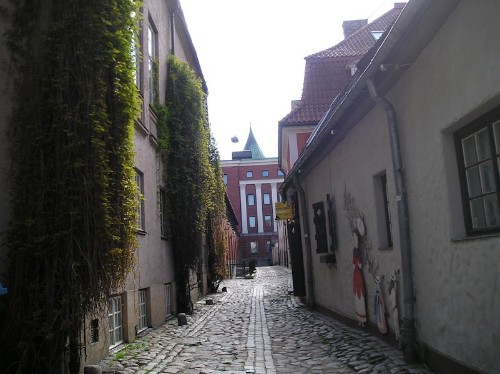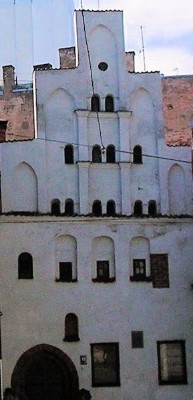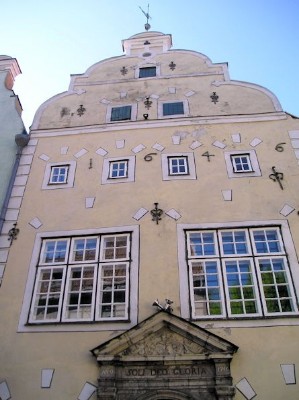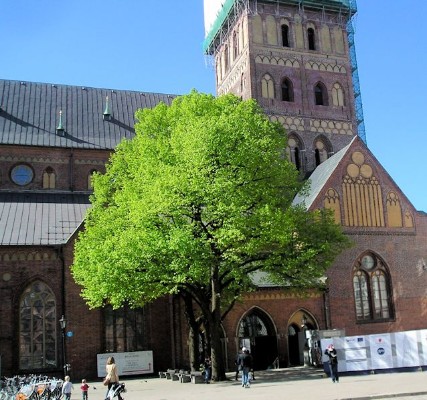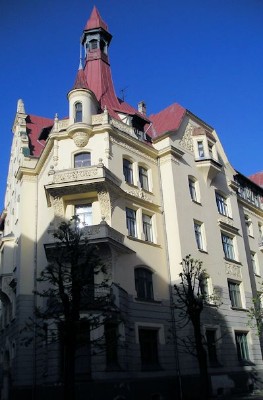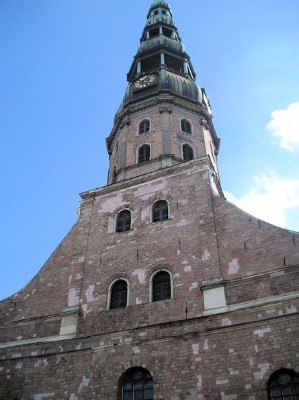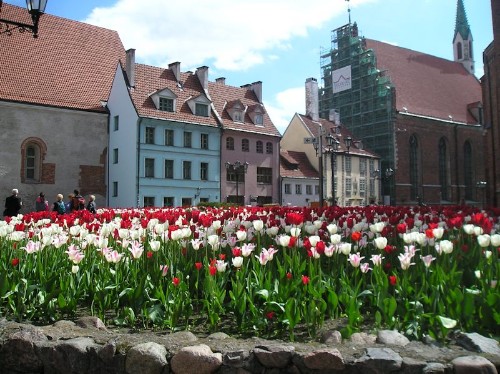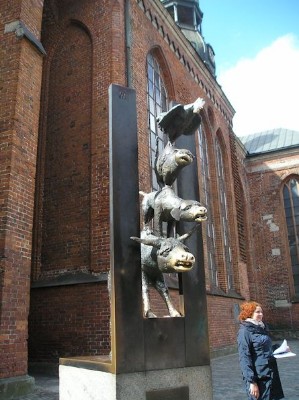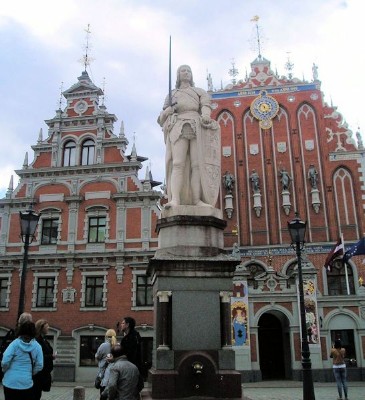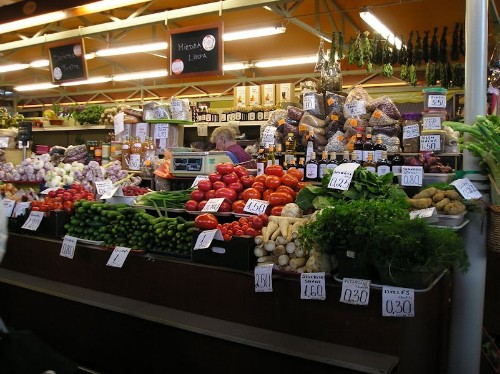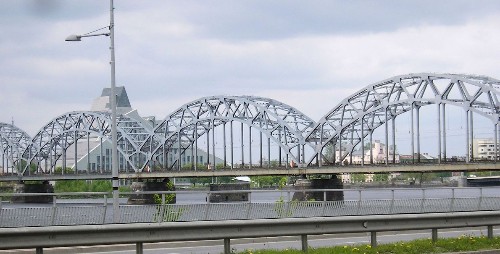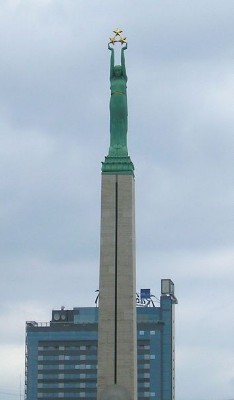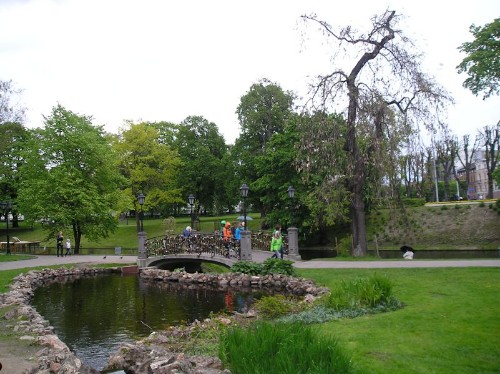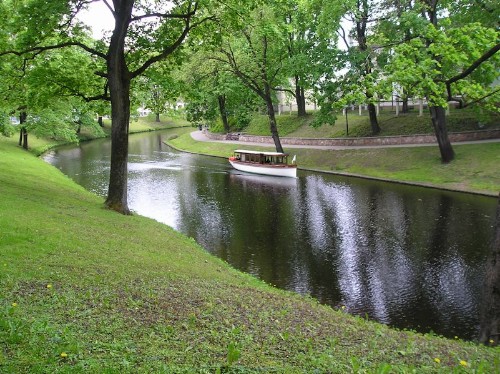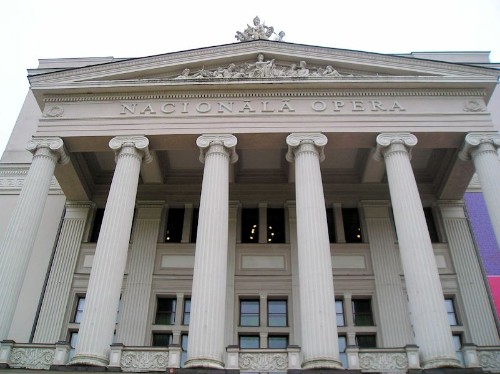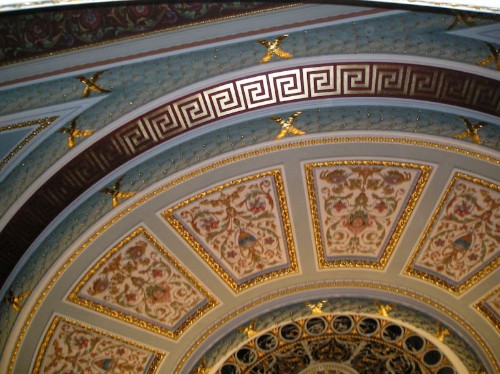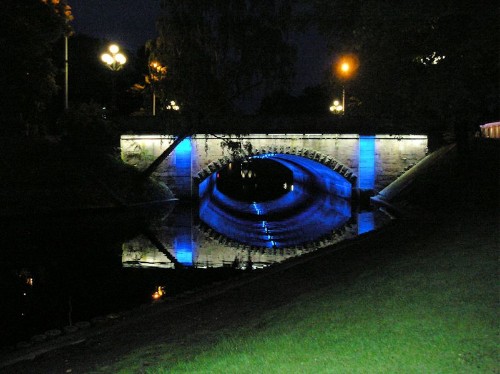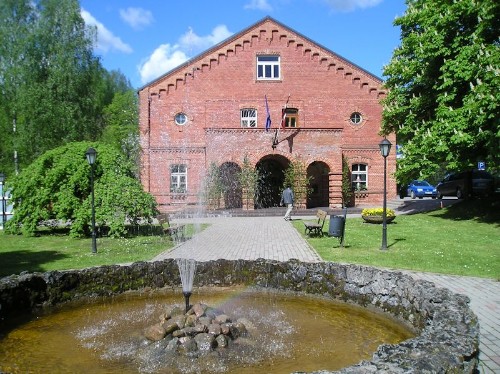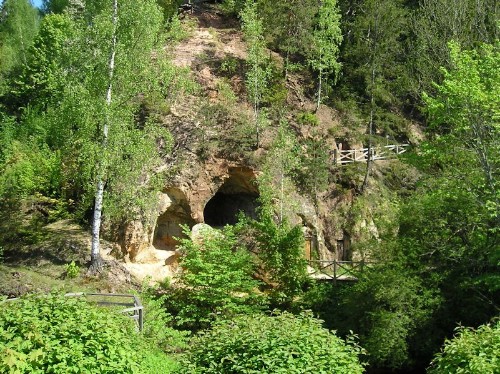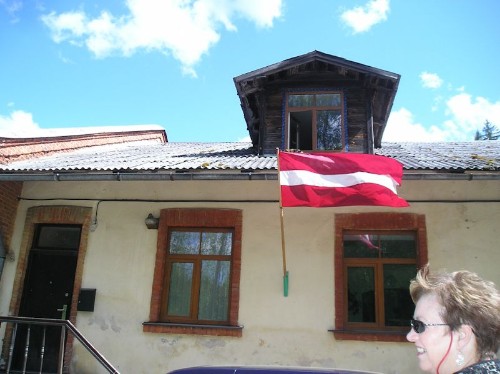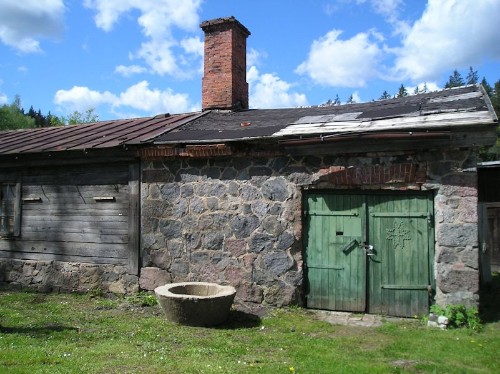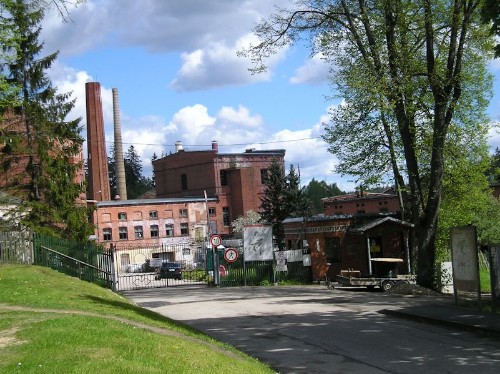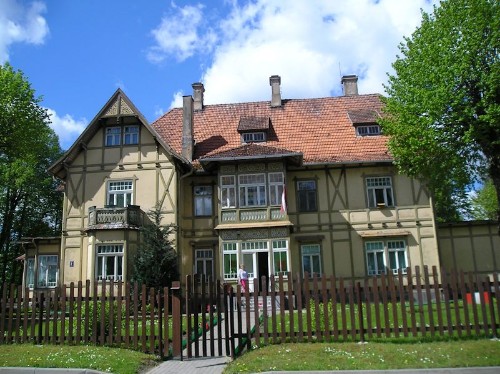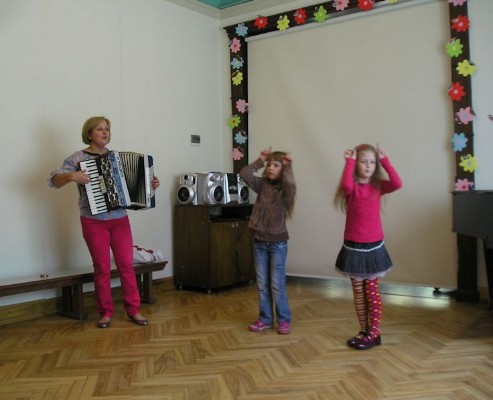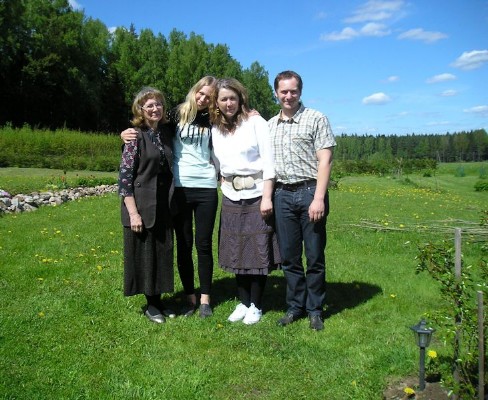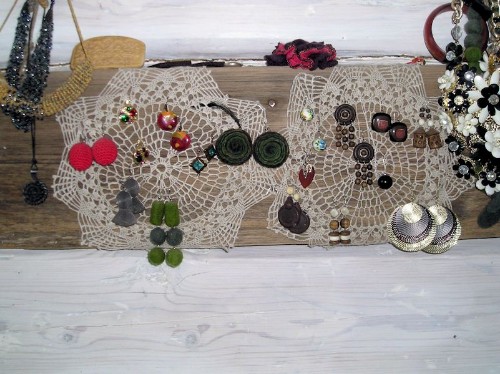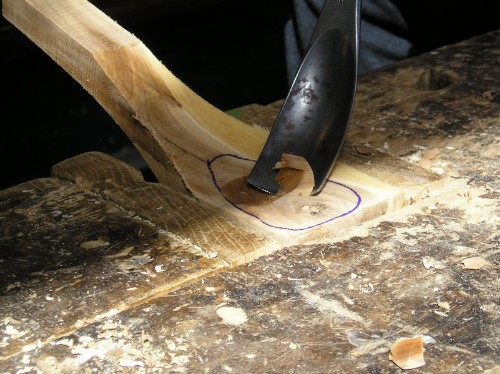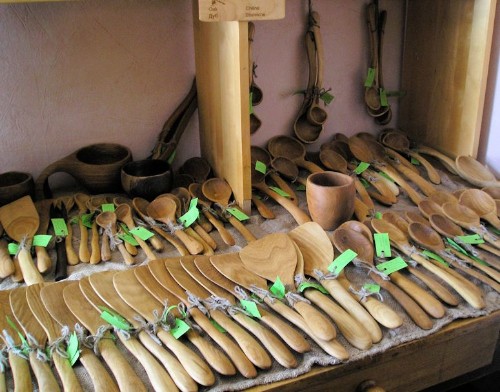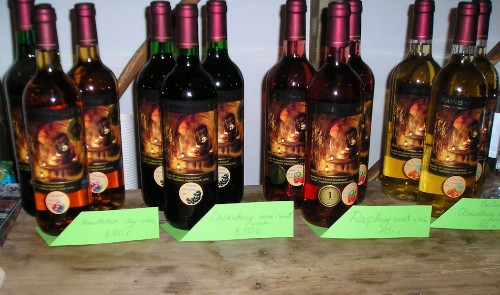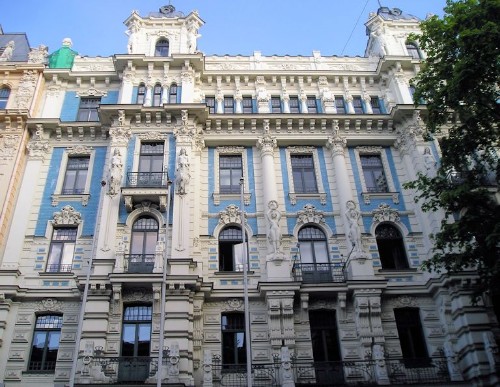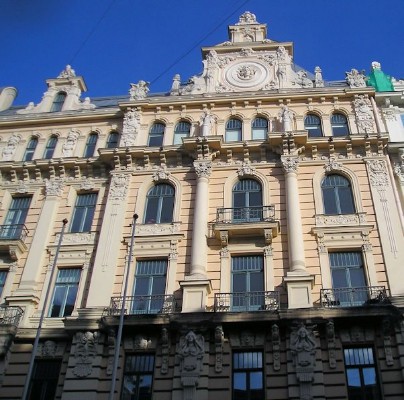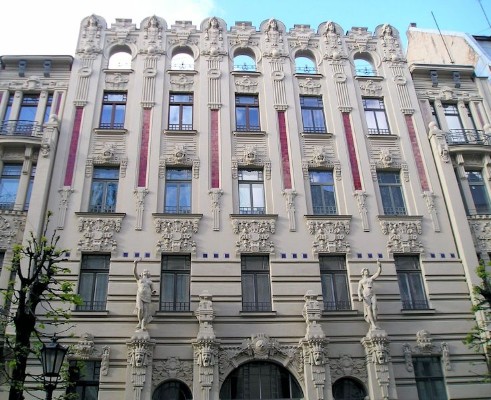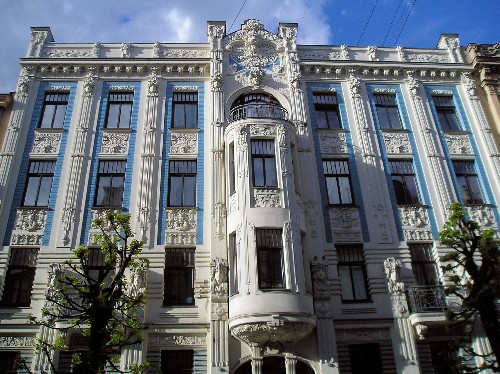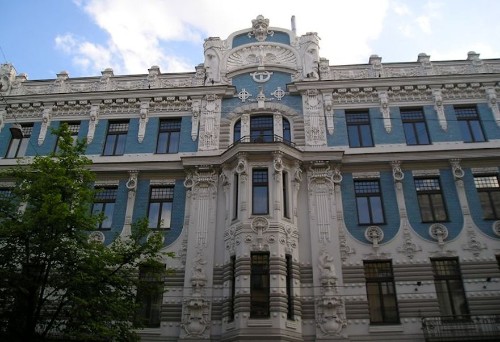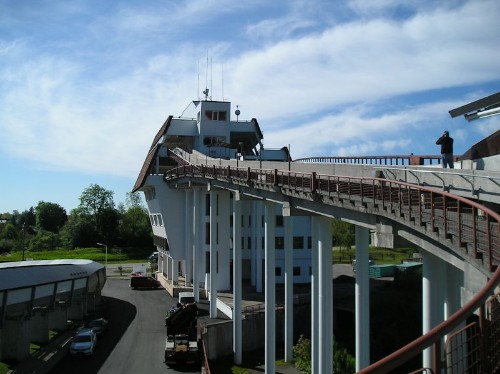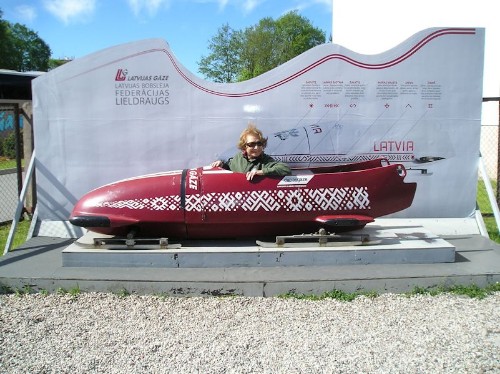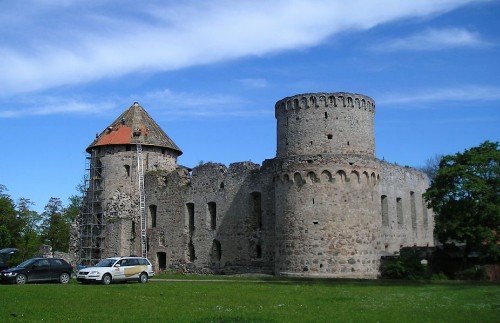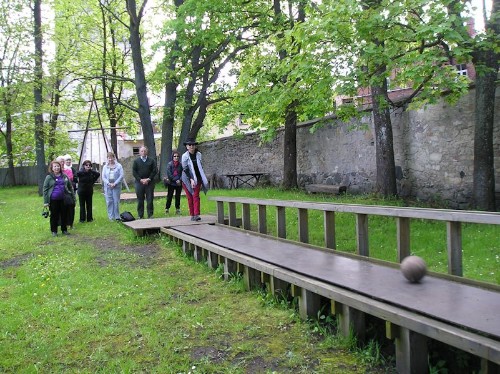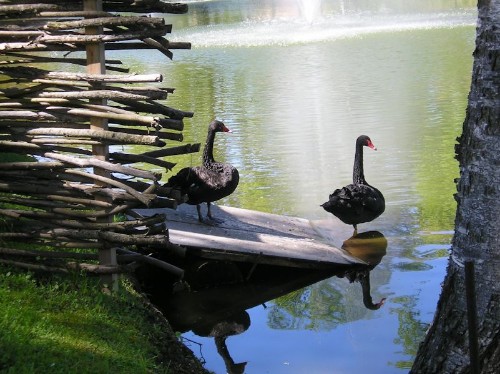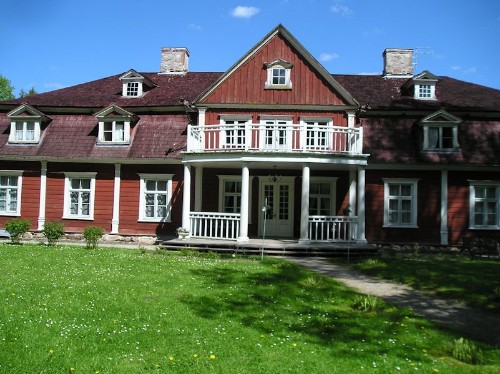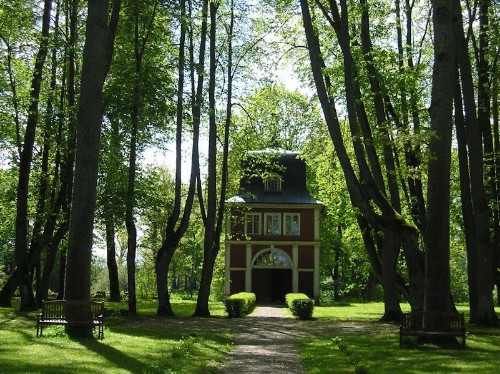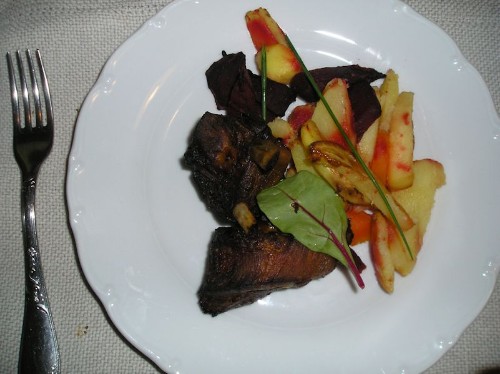Latvia
Riga, Ligatne, Cesis
By: Zeren Earls - Jul 15, 2015
Driving north from Lithuania, our first stop was the Rundale Palace and Garden, 67 km from Riga. One of the architectural monuments of the country, the 18th-century baroque palace, built for the Duke of Courland in what is now Latvia, was reconstructed and restored to its original glory in 1962 and is now a museum.The lavish stucco decorations and luxurious interiors provide a glimpse into the carefree everyday life of the court. Set within a park, the magnificent exterior opens in the back onto a French formal garden with a fountain. In addition, the stately park includes promenades, flower gardens, a theater, and a memorial to honor war victims. A separate ticket is required to see the park.
As we crossed one of the bridges over the Daugava River, we caught a glimpse of a castle on one side and modern Riga on the other, reminding us that we were entering a city with medieval history. Heading straight to the PK Riga Hotel in the Art Nouveau district, our home for the next three nights, we ended the day’s journey. Following dinner at the hotel, I dropped off to sleep around 10 pm, although it was still light out in this northern European city.
Walking the next morning through a beautiful park with tall trees, tulip beds, a waterway, and a fountain, we reached the Old Town and continued the walk on narrow cobblestone streets. Buildings with ornate facades, others with steep roofs, and churches with spires spoke of a bygone era, while street musicians animated the sidewalks. We stopped in front of a house with a crow-stepped gable and Gothic decorations; this was the oldest in a complex of three dwellings, called the “Three Brothers.” Built in the late 15th century, it stood adjacent to another dwelling built in 1646. A narrow baroque building, architecturally the most recent, completed the trio.
Our foot-path took us by the Dome Cathedral, built in 1211.The large medieval structure, which has gone through many modifications in the course of its history, is now the Evangelical Lutheran Cathedral and the seat of the Archbishop of Riga. Famed for its organ, it hosts concerts frequently. St. Peter’s, built in 1209 and also an Evangelical Lutheran Church, is a symbol of the city with its 236-foot-tall observation tower. Destroyed by artillery in 1941, the church has been reconstructed, including its identical portals with baroque stone sculptures, originally added in 1694. The tower now supports a clock with a glockenspiel, which plays five times a day; church bells ring every hour.
A delightful surprise was to come upon bronze renditions of the Bremen Musicians from Grimm’s fairy tales. The stacked animals — a donkey, a dog, a cat and a rooster — all had shiny noses, rubbed by people as they made a wish. Also on Town Hall Square is the House of the Blackheads, a merchants’ guild from the early 14th century. The building, bombed in 1941, has been reconstructed to its original architectural splendor and now serves as a museum and concert hall. Another building of note is the Museum of the 1940-1991 Occupation of Latvia. Built in 1971 to celebrate what would have been Lenin’s 100th birthday, the museum is now an educational institution about Latvia under two occupying totalitarian regimes — Nazi Germany and the USSR.
Leaving Old Riga, we drove to the Central Market, originally built in the 1930 s for German zeppelin hangars. Pavilions used during WWII and the Soviet era, now under UNESCO protection, were bursting with an array of colorful produce and tasty food products. On the way back, we got a glimpse of the Freedom Monument, built in 1935 to honor soldiers killed during the 1918-1920 Latvian War of Independence. The 138-foot granite tower punctuates the skyline with a woman holding up three stars. For the monument to survive the Soviet occupation, the architect was able to convince the authorities that it symbolized mother Russia with the Baltic countries in her hand! The monument is the focal point of gatherings and official ceremonies.
A well-deserved lunch consisted of soup made of root vegetables and chicken accompanied by rice and vegetables. A dessert of berry gateau topped with ice cream and drizzled with berry syrup hit the spot. During time on our own, I decided to walk back to the hotel through the beautiful park to take a nap, as some of us had tickets to see the Marriage of Figaro in the evening.
Later in the day we gathered for a “smart talk” by an economist, who worked for the Ministry of Finance. He began with a brief history of Latvia, which had been part of the Russian Empire for 200 years. WWI was a turbulent time; Latvia enjoyed independence between the two World Wars, becoming part of the Soviet Empire in 1945. With the breakup of the Soviet Union, it became an independent country in 1990, joining the European Union and NATO in 1995.
In the 1990 s people had to relearn many things; they readopted the 1922 constitution, which does not give the president any powers.The real estate sector grew the most, creating a bubble; Finnish and Swedish banks helped out. Austerity measures reduced wages and raised taxes, decreasing GDP. There is a Russian embargo on food exports from Latvia. The country is more sustainable now than before; unemployment is 9%. The countryside is in worse shape — no hope, no jobs. Latvia has seven cities; the rest are all villages. Emigration continues; Ireland is the major recipient of Latvians. Timber and arable land are major assets; niche markets, such as car parts, are developing. Industry is diversified, with a strong IT sector. Sales tax is 21%.
This lecture made it clear why the opera we attended afterwards cost only 15 euros, which seemed inexpensive by US standards. Mozart’s Marriage of Figaro, a musical comedy in four acts, was a beautiful production, with superb singers and the choir of the Latvian National Opera. The 18th-century opera was staged with contemporary sets and costumes in a neo-classical building, refurbished in 1995. The program notes were in both English and Russian in addition to Latvian, as there is still a large population of native Russian speakers in the country. As we walked back to the hotel through the park, the nighttime view was enchanting, with special lighting of the bridges and waterways.
The following morning we left for an excursion to experience A Day in the Life of the village of Ligatne, located within Gauja National Park, 45 miles outside of Riga. 200 years ago, the Germans built a paper mill in the park, with nearby rivers as the energy source. The factory provided housing free of charge for the workers, provided they consented to 12-hour shifts. Initially workers lived in barracks, which were replaced in late 19th century by wooden houses, still occupied by the descendants of mill workers. As housing conditions changed after independence, living in the country and commuting to the city became desirable; Ligatne became an attractive place for artists. The paper mill was active until 2014.
Our visit fell on a Sunday; however, the mayor, a fourth-generation native of Ligatne, met us at the Cultural Center and took us on a tour. He had been mayor since 2005 after attending university in Riga and serving his two-year draft in the Soviet army. We visited a karate class for young boys; walked through trails in the park, where we saw sandstone cellar caves, including one on two levels; then walked through town to see the renovated architecture. Restoration architects of Latvian origin, with a firm in Boston, worked over a six-year period to restore many of the buildings, including the paper mill and small buildings located between dwellings, which were used by workers’ wives for washing and baking bread. The sentinel of the mill, built in 1889, is now a Tourist Information Center.
Although the kindergarten was not in session, we were met by the director/music teacher and two seven-year-old students, who sang Old MacDonald for us. The school has been in operation since 1939 and caters to 135 children aged 1½ to 7 in two buildings. There are two teachers for each 16 children, who have three meals a day during the period from 7 am to 7 pm. The state pays for teachers’ salaries; the municipality provides the supplies; parents pay 2.18 euros per day per child for food. As we toured the classrooms, the former art teacher in me wished to see children’s creative artwork on the walls, reflecting their imagination.
A home-hosted lunch in a house of artists was delightful. Having grown up in Ligatne as the granddaughter of the chief engineer of the paper mill, our host had decided to return to her roots. She and her husband purchased a two-story house, took it apart and moved it to an empty lot piece by piece, then rebuilt it. One of their three children is an aspiring ceramicist, Her sister, a painter, joined us for lunch. Their creative touch was evident throughout the house, which they had built and furnished themselves, including the attic with the artist’s weaving studio. Over spirited conversation, we enjoyed nettle soup with sour cream, beef Stroganoff with boiled potatoes, fried beef patties, and green salad, accompanied by fresh apple juice from a nearby orchard. Rhubarb jelly with whipped cream and apple pie topped the delicious meal. Bidding goodbye to the Siltraksti family, we continued on our way.
A spoon factory in the district of Ligatne was our next destination. Wood products are plentiful in Latvia, as 40% of the country is forest land, with more than 17 species of wood. We watched a craftsman strip a piece of wood, carve it into a spoon, then oil it; we tried our hand at carving one too. The factory shop had a variety of hand-made wood items for purchase. Afterwards we went to the Ligatne Winery, which specializes in making wines from garden and forest berries, collected from Gauja National Park. The alcohol content of the fermented berries is only 6%, as opposed to 13% in regular wine. In the tasting room there was a wide choice of wines — raspberry, chokeberry, dandelion, and rhubarb. I liked the semisweet chokeberry wine the best.
Upon returning to Riga, we had time to see the Art Nouveau district. Although we had seen several buildings in passing, this was to be solely an Art Nouveau tour with Vita; so I joined in. Art Nouveau, also known as Jugend Style, came into being as a reaction to the eclectic architectural style at the end of the 19th century. Refusing straight corners and lines, it favored curves, often using ornaments inspired by the world of flora. It was a style which advanced artistic individualism. There are 850 Art Nouveau buildings in Riga, many of which are under the protection of UNESCO. Walking these streets, one has to gaze up to get a close look at facades with delicate balconies and unusual windows. Human and animal masks, sphinxes, female figures, and angels and gods of antiquity all look down upon and amaze you.
After a day filled with so many wonders, I needed quiet time and walked over to the nearby Flying Frog Café, a fitting name for a fanciful city. Following a bowl of seafood soup, I returned to the hotel, stopping on the way to get Riga’s famed “black balsam.” Invented in the 18th century, this is a drink made with an extract of healing herbs, considered to be a panacea for all ailments.
In the morning we left for Estonia, stopping at a couple of places before we crossed the border. A surprise stop was in Sigulda, situated in the Gauja Valley and known for its beautiful landscapes and adrenaline-filled activities. Vita wanted us to see the bob-sledding track, used heavily during the winter. We took the elevator to the top and walked down the length of the track, enjoying the view, and took turns sitting in a bob-sled at the end!
Our lunch stop was in Cesis, the medieval capital of Livonia within Gauja National Park. We walked around the well-preserved ruins of a 13th-century stone-wall castle built by the Knights of the Sword and enjoyed medieval-style bowling on the grounds. Nearby, black swans rested by a picturesque pond, their shadows reflecting in the water. On the grounds is also a souvenir shop, where I purchased a tie-on belt woven with a traditional Latvian design.
Cesis has preserved an 18th-century wooden manor house with a separate tea-house. Behind the baroque building are the servants’ quarters, now a restaurant. Here we had a delicious lunch of meatball soup and beef ribs with cream sauce, accompanied by potatoes, beets, and sauerkraut made of cabbage and carrots, and followed by baked apple drizzled with sweet cream for dessert. This ample and satisfying lunch set us on our way to Estonia as we bid goodbye to beautiful Latvia, rich in history, culture, and artistry.

